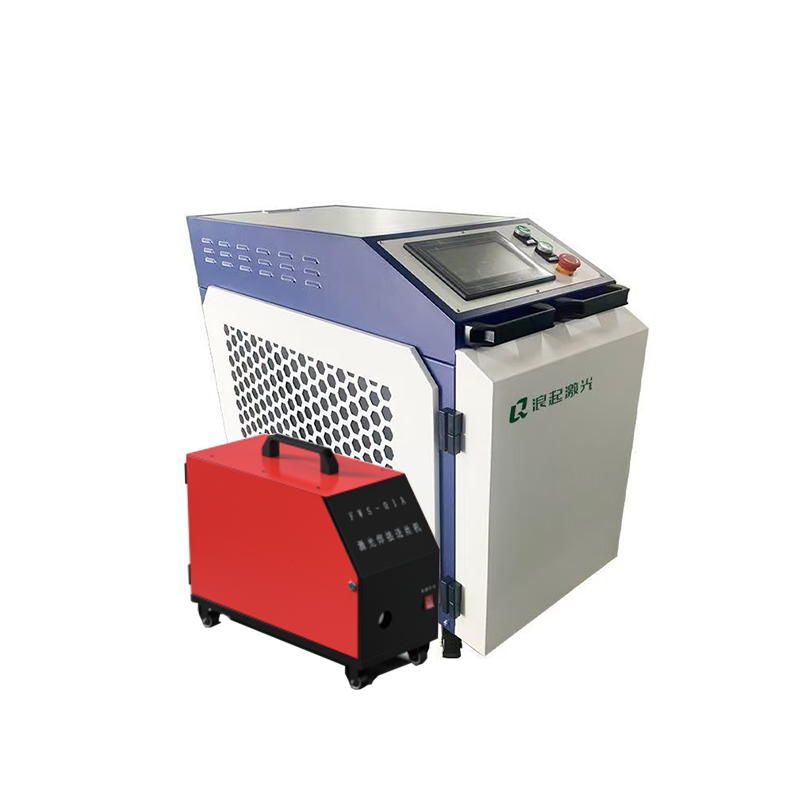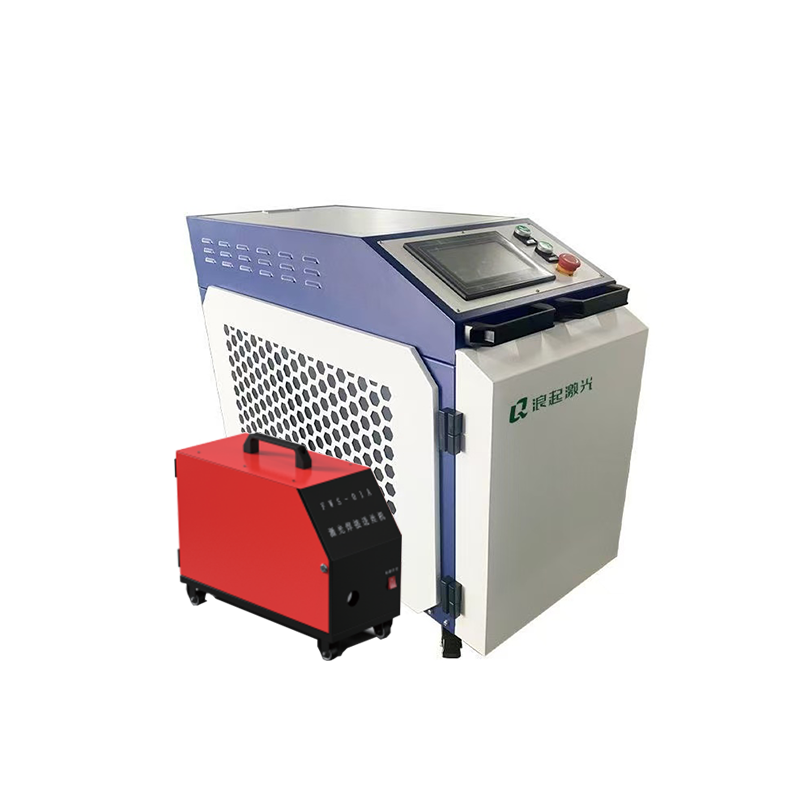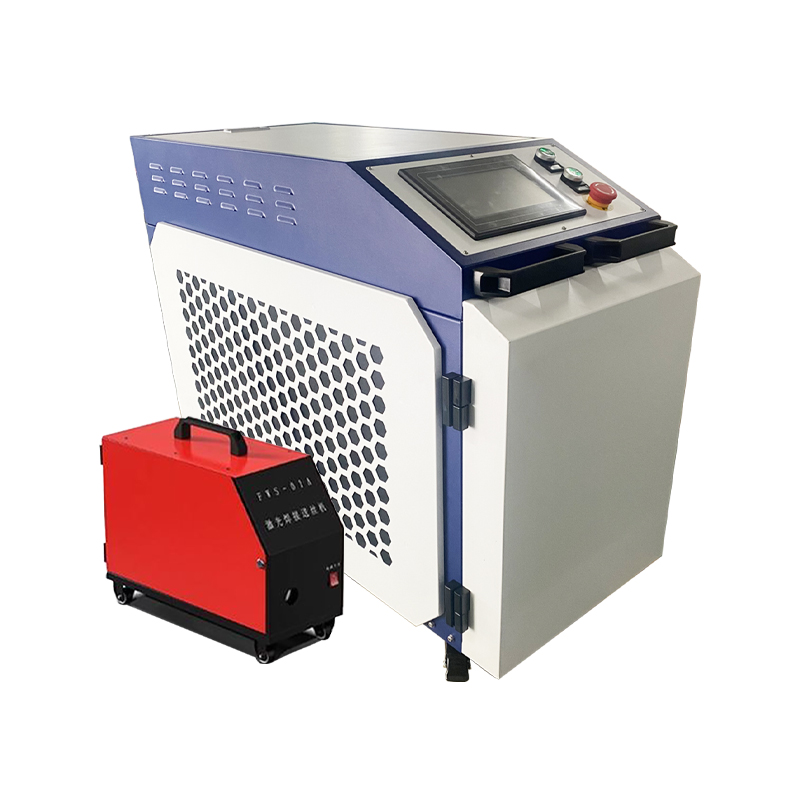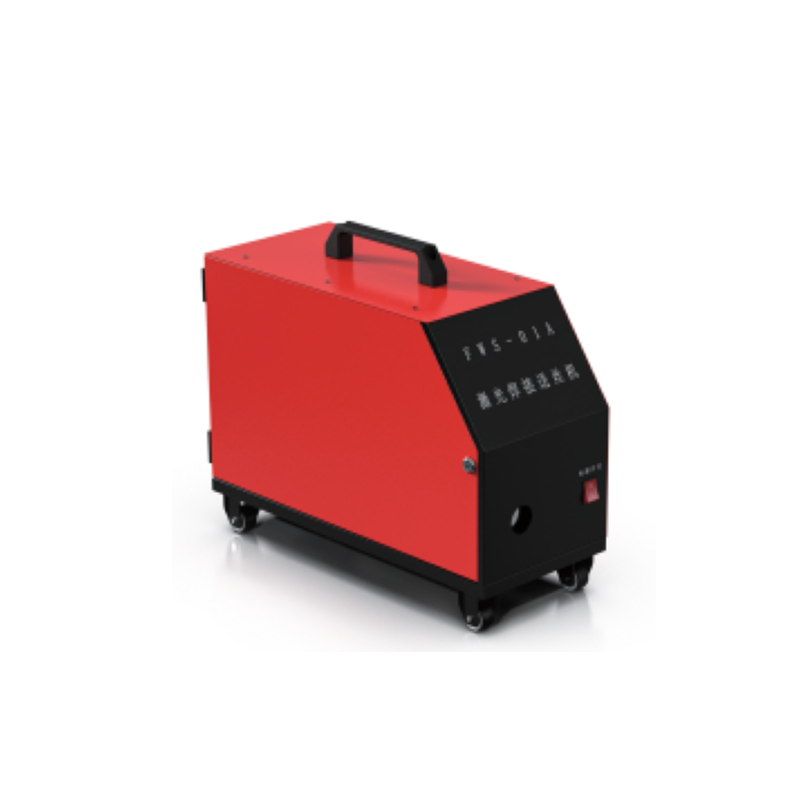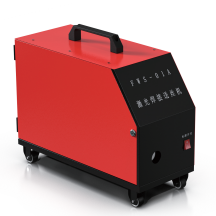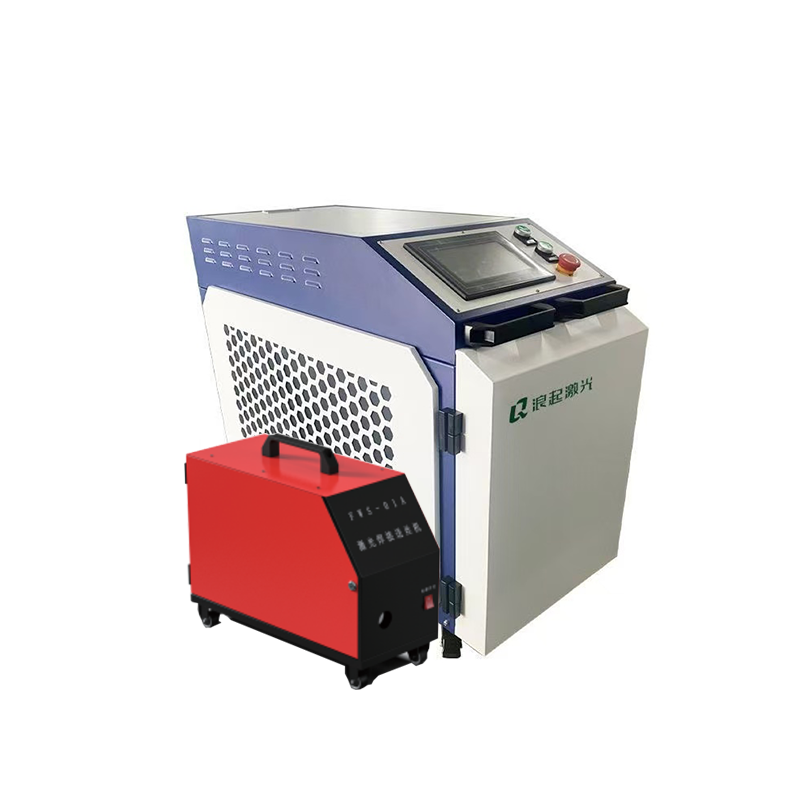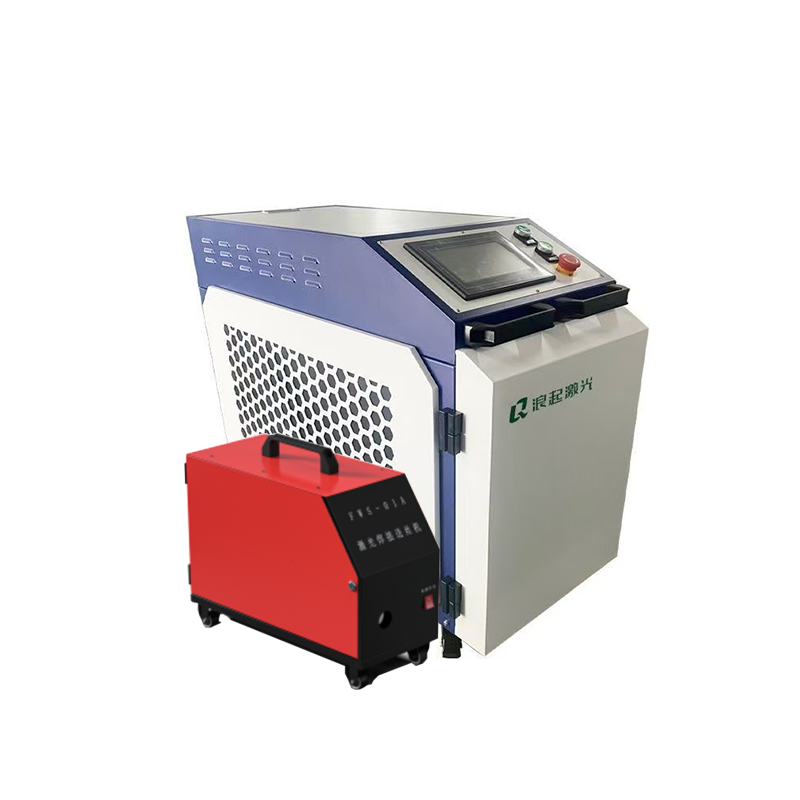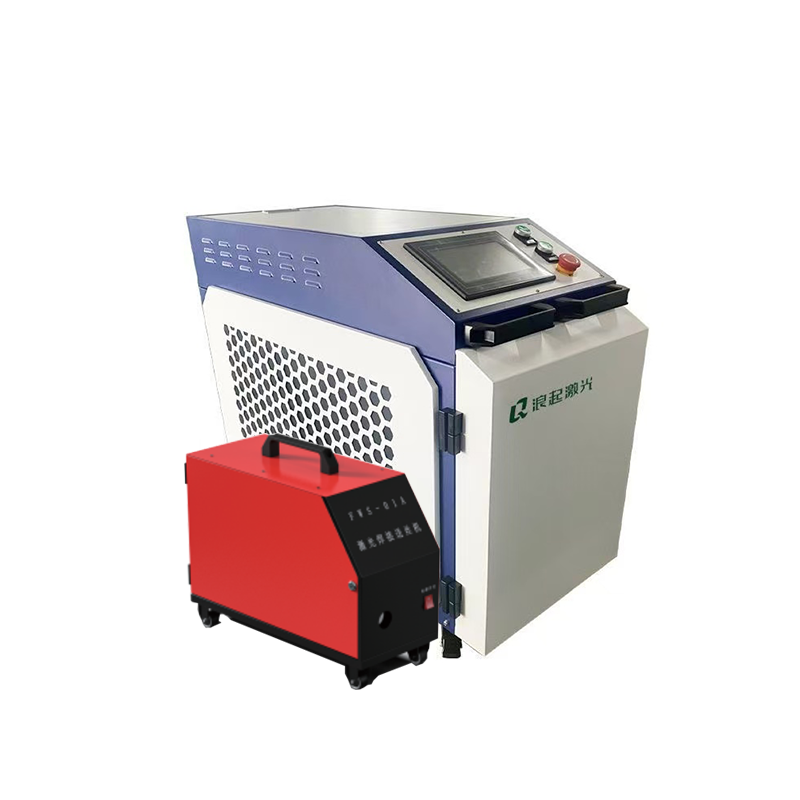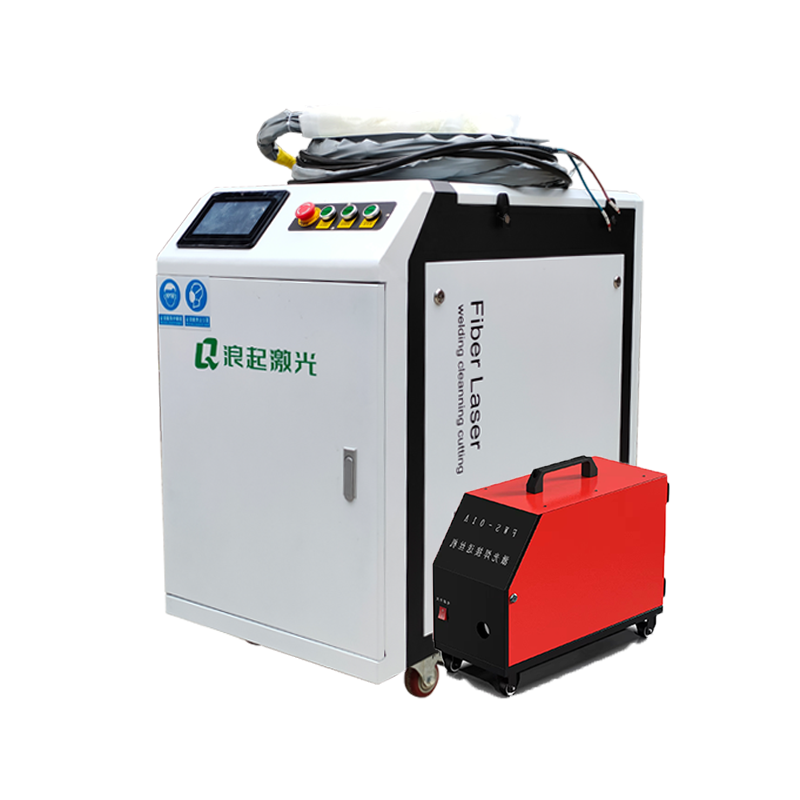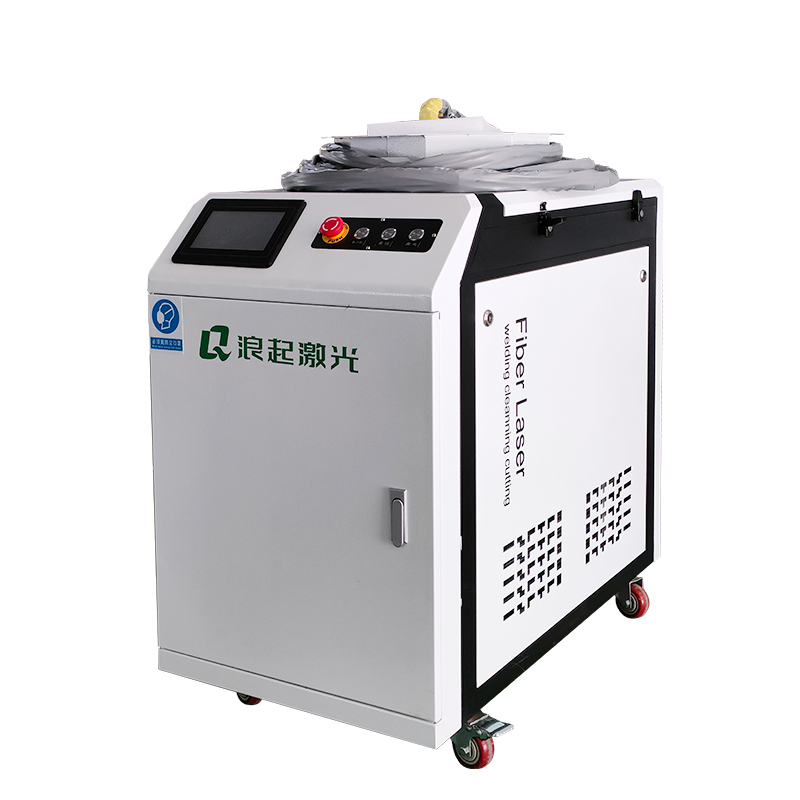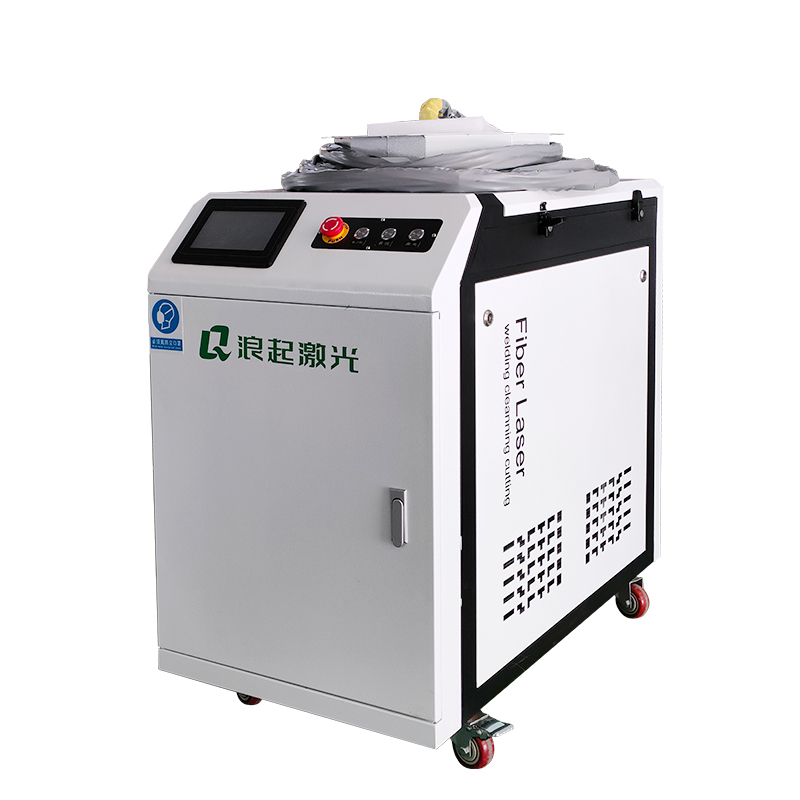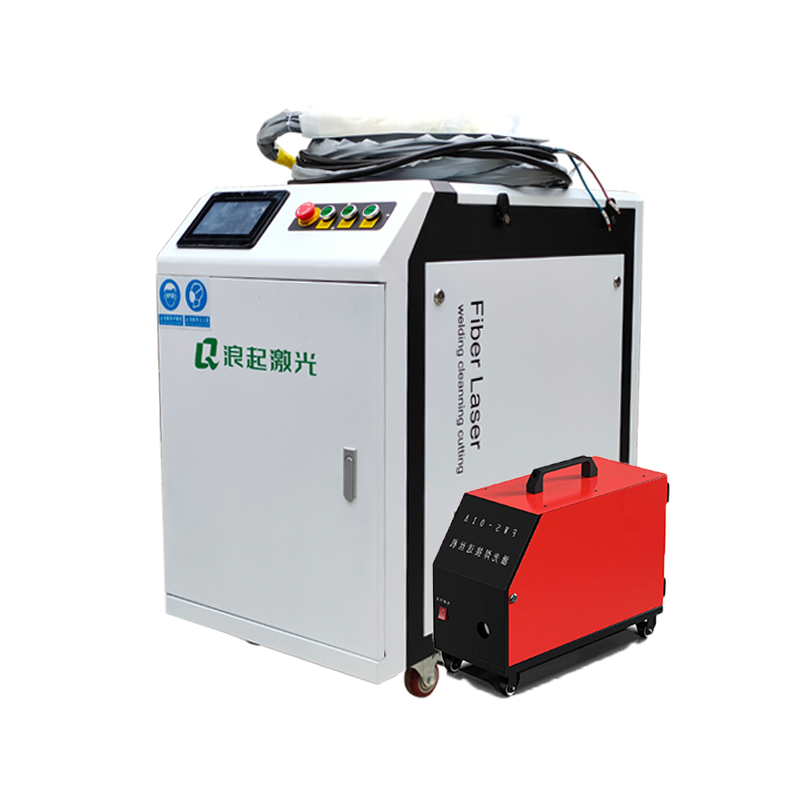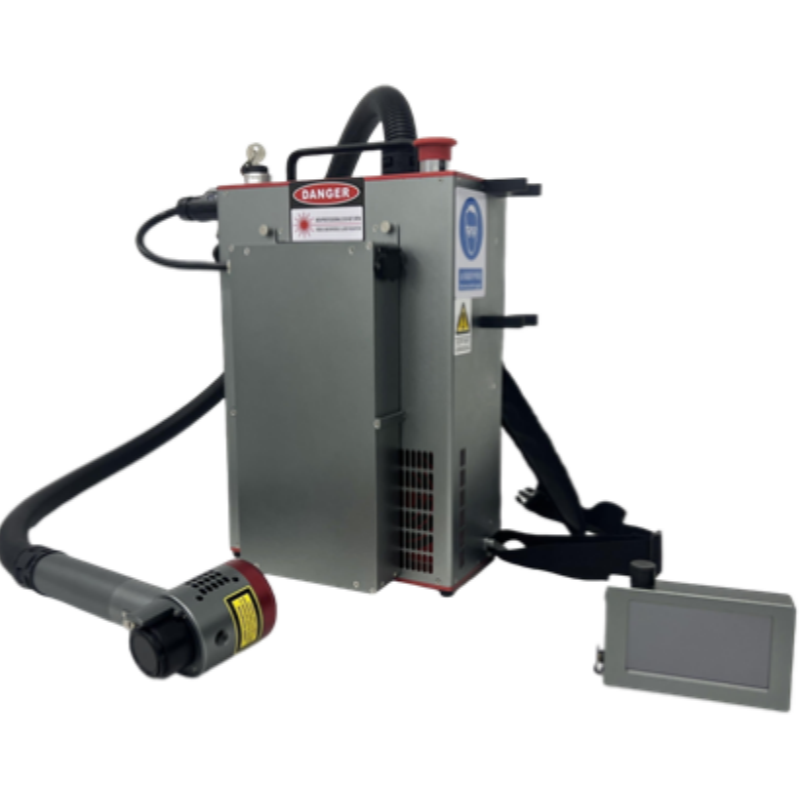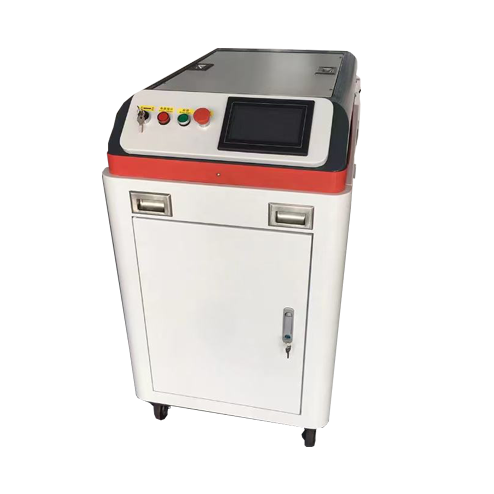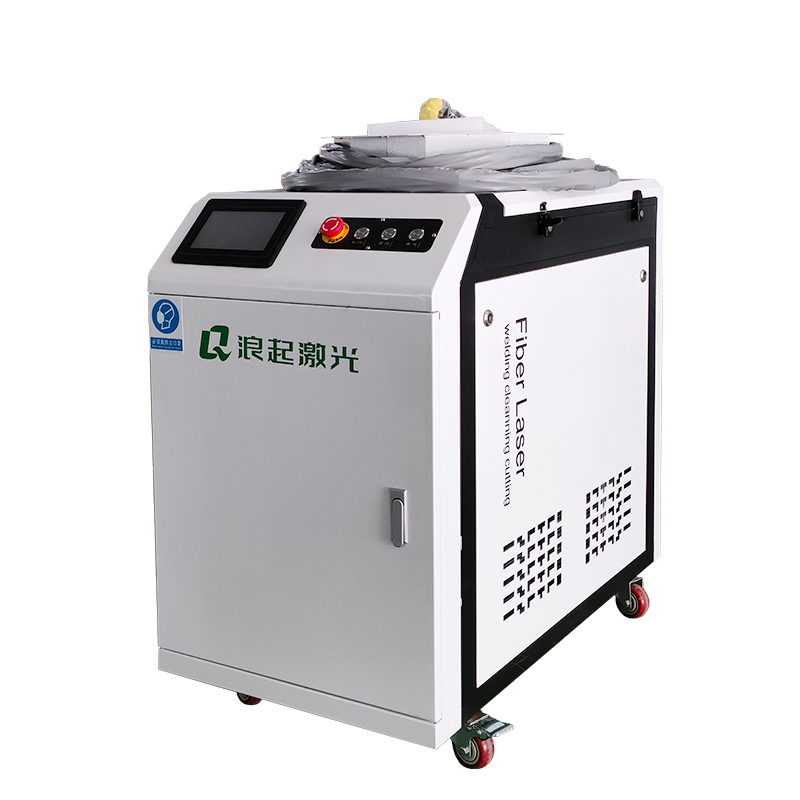Of course. Here is a detailed overview of a Fiber Laser Welding & Cleaning Machine with Wire Feeder, covering its components, how it works, applications, and key advantages.
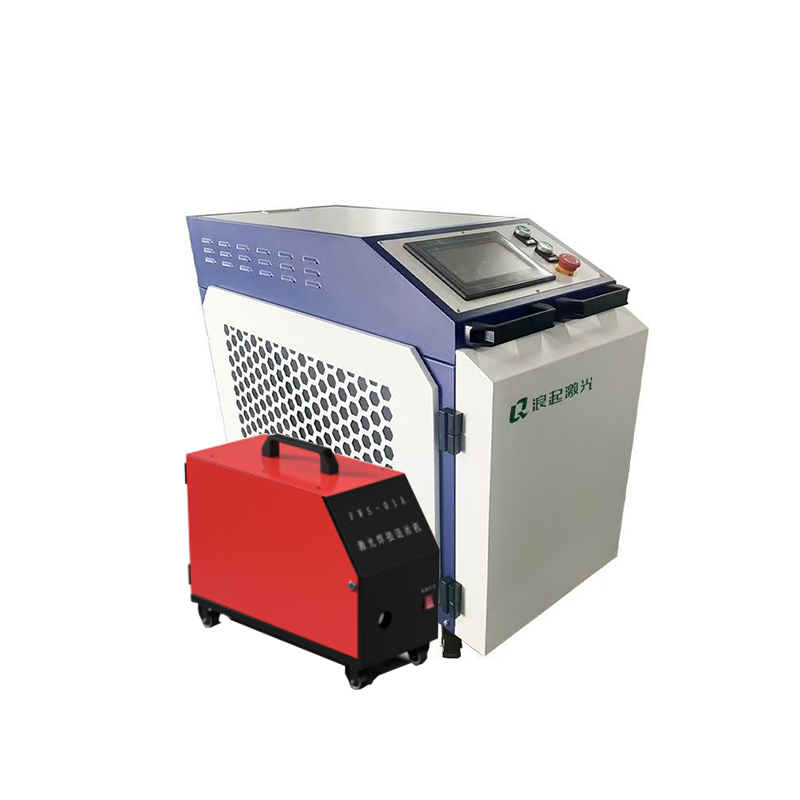
What is This Machine?
This is an all-in-one industrial laser system that combines three key functions into a single, integrated platform:
Fiber Laser Welding: Uses a high-power density laser beam to create deep, narrow, and high-strength welds.
Laser Cleaning: Uses a lower-power or defocused laser beam to remove rust, paint, oxides, oil, and other contaminants from metal surfaces through ablation.
Wire Feeder: An auxiliary system that automatically feeds filler metal wire into the weld pool during the welding process.
This combination makes it an incredibly versatile and efficient tool for modern metal fabrication, repair, and maintenance.
Key Components of the System
Fiber Laser Source: The heart of the system. It generates the laser beam. Fiber lasers are preferred for their high efficiency, excellent beam quality, reliability, and low maintenance.
Laser Processing Head: A sophisticated optic assembly that focuses the laser beam onto the workpiece. It often includes:
Collimator and Focusing Lens: To control and focus the beam.
Capacitive Height Sensor (CHS): Crucial for maintaining a consistent distance between the head and the workpiece, ensuring stable welding and cleaning quality.
Protective Window: To shield internal optics from spatter and debris.
Wire Feeder System: Consists of a feed motor, a spool of filler wire, and a torch-mounted guide nozzle. It precisely controls the speed and timing of the wire feed into the laser weld pool.
Cooling System (Chiller): Essential for removing heat from the laser source and the processing head to ensure stable operation and long component life.
CNC Motion System: This can be:
Robotic Arm: Offers maximum flexibility for complex 3D paths (e.g., for automotive part repair).
Gantry System: Ideal for processing large, flat sheets or plates.
Fixed System with Manual Manipulation: For smaller shops or more artistic work, the head can be mounted on a manual articulating arm.
Control System & Software: The operator interface. It allows the user to switch between welding and cleaning modes, set parameters (laser power, speed, pulse frequency, wire feed speed), and program motion paths.
How It Works: Integrated Functions
1. Laser Welding with Wire Feeder
The focused laser beam creates a small, intense "keyhole" of molten metal.
The wire feeder simultaneously feeds filler metal (e.g., stainless steel, aluminum wire) directly into this keyhole.
The filler wire melts and merges with the base material, filling the joint and building up material if needed.
Why use wire?
Bridging Gaps: Allows for welding parts that don't have a perfect fit-up.
Material Addition: For building up worn parts or creating specific weld geometries.
Alloying: Using a different wire material can change the properties of the weld metal (e.g., better corrosion resistance).
2. Laser Cleaning
The system switches modes, often by changing parameters and sometimes by defocusing the beam or using a different scanning pattern.
The laser beam hits the surface contaminant (e.g., rust). The contaminant absorbs the laser energy, heats up rapidly, and vaporizes or sublimes (turns directly from solid to gas).
The underlying base metal, typically with a higher melting point, remains unaffected and undamaged.
A vacuum system is often used to capture the ejected particles.
Applications and Industries
This combo machine is a powerhouse for:
Mold & Die Repair and Maintenance: Weld to repair damaged edges or worn surfaces on expensive injection molds and stamping dies, then use laser cleaning to remove release agents, carbon residues, and oxides without damaging the precision tool surface.
Automotive and Aerospace: Weld high-strength, lightweight components (e.g., aluminum battery trays, brackets). Clean critical areas before welding to ensure perfect, pore-free welds by removing oxides and oils.
Precision Manufacturing: Weld thin sheets and精密parts with minimal distortion. Clean sensitive components like electrical contacts or historical artifacts.
Heavy Industry & Shipbuilding: Perform root passes and welds on thick plates. Clean hull welds, rust from pipelines, and prepare surfaces for coating.
Art and Sculpture: Weld intricate art pieces and then clean them to a perfect finish without abrasive methods that could damage details.
Advantages of the Combined System
| Advantage | Description |
|---|---|
| Unmatched Versatility | One machine handles both preparation (cleaning) and joining (welding), drastically reducing production time and handling. |
| Superior Weld Quality | Laser cleaning immediately before welding ensures a perfectly clean joint, leading to welds with no porosity, cracks, or inclusions. |
| Non-Contact & Low Damage | Both processes are non-abrasive and generate minimal heat, preventing part distortion and surface damage common with grinding or sandblasting. |
| Automation & Precision | Easily integrated into robotic cells for high-volume, repeatable production with exceptional accuracy. |
| Environmental & Operational | Eliminates need for chemical cleaners, abrasive media (sand, glass beads), and reduces waste. Much quieter than traditional cleaning methods. |
| Cost-Effectiveness | While the initial investment is high, it reduces labor costs, consumable costs (no more grinding discs or sand), and downtime between processes. |
Considerations Before Buying
High Initial Investment: These are advanced, capital-intensive machines.
Operator Training: Requires skilled programmers and operators to understand laser parameters for both applications.
Safety: CRITICAL. High-power lasers require stringent safety protocols: Laser-rated enclosures, interlocks, and dedicated Laser Safety Officers (LSO) are mandatory to protect against severe eye and skin injury.
Material Limitations: While excellent for metals, lasers are not suitable for all materials (e.g., many plastics or transparent materials).
Conclusion
A Fiber Laser Welding & Cleaning Machine with Wire Feeder represents the pinnacle of flexible, modern metal processing technology. It streamlines the entire workflow from part preparation to final joining in a single, environmentally friendly, and highly precise system. It is a transformative investment for any serious fabrication, repair, or manufacturing operation looking to improve quality, efficiency, and capability.

